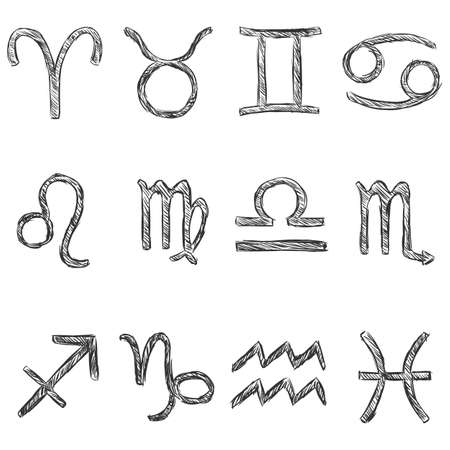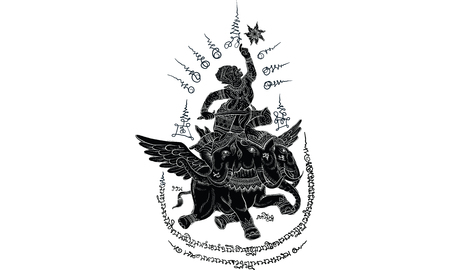Introduction: Locating the Zodiac within the British Romantic Imagination
The late eighteenth and early nineteenth centuries marked a profound transformation in British poetry, known as the Romantic period. This era was defined by a renewed fascination with nature, emotion, and the sublime, as well as an acute sensitivity to the mysteries of the cosmos. Within this imaginative landscape, celestial symbols—most notably those of the zodiac—emerged as powerful motifs that both reflected and shaped contemporary thought. While the Age of Enlightenment had championed rationality and empirical observation, Romantic poets sought to reclaim wonder and subjectivity, often turning their gaze skyward to find meaning in the stars. In Britain, astrology and zodiacal imagery permeated literature and popular culture alike, serving as a conduit for exploring fate, individuality, and cosmic order. These signs were more than mere astrological curiosities; they became vehicles for self-reflection and philosophical inquiry, woven seamlessly into poetic language and symbolism. By examining how British Romantic poets engaged with zodiac motifs, we gain insight into their broader preoccupations with destiny, imagination, and the interplay between earthly existence and celestial influence. This section will explore the context of British Romantic poetry, emphasizing how celestial symbols and astrology permeated the cultural landscape of late 18th and early 19th century Britain, laying the foundation for the significance of zodiac imagery.
Zodiacal Motifs in Canonical Romantic Works
The Romantic period in British poetry was marked by a profound engagement with the celestial and the symbolic, and the twelve zodiac signs emerged as potent motifs within the works of its most celebrated poets. The interweaving of astrological imagery with poetic language allowed figures such as Wordsworth, Coleridge, Blake, and Keats to draw upon the ancient cosmological significance of the zodiac, imbuing their verse with both mythic resonance and philosophical depth.
Astrological Allusions and Poetic Language
Romantic poets did not merely reference the zodiac as a decorative element; rather, they harnessed its archetypal power to articulate themes of fate, transformation, and unity between nature and the cosmos. William Wordsworth often invoked seasonal cycles governed by zodiacal progression—using Aries to symbolise spring’s renewal or Capricorn for winter’s introspection—thereby aligning human experience with the eternal rhythms of the heavens. Samuel Taylor Coleridge, in works such as “The Rime of the Ancient Mariner,” employed astrological language to evoke a sense of cosmic order amid chaos, subtly referencing signs like Pisces and Sagittarius as markers of spiritual journey and transcendence.
Cosmological Thought: The Zodiac as Worldview
For William Blake, the zodiac represented not only a physical or temporal marker but also a visionary schema through which divine order is apprehended. In his prophetic books, Blake’s iconography is replete with references to Leo (strength), Aquarius (revolution), and Scorpio (transformation), each signifying phases in humanity’s spiritual evolution. Similarly, John Keats’s lush sensuality frequently alluded to Taurus (earthly pleasure) or Cancer (emotional depth), reflecting his fascination with mythic time and the cyclical nature of existence.
Comparative Table: Zodiac Sign Usage by Major Romantic Poets
| Poet | Key Zodiac Signs Invoked | Representative Work/Passage | Symbolic Function |
|---|---|---|---|
| Wordsworth | Aries, Capricorn | The Prelude | Cyclical renewal; Nature’s rhythm |
| Coleridge | Pisces, Sagittarius | The Rime of the Ancient Mariner | Spiritual journey; Cosmic navigation |
| Blake | Leo, Aquarius, Scorpio | The Marriage of Heaven and Hell | Visionary transformation; Divine order |
| Keats | Taurus, Cancer | Endymion | Sensuality; Emotional cycle |
The Enduring Influence of Zodiacal Symbolism
This intricate constellation of allusions demonstrates how British Romantic poets used zodiacal symbolism not simply as ornamentation but as a framework for expressing both personal experience and universal truths. Their deployment of astrological motifs invites readers to contemplate the interconnectedness of human life with celestial patterns—a perspective deeply embedded in both classical tradition and emergent Romantic cosmology.

3. Astrology as Allegory: Symbolic Functions of Zodiac Signs
The Romantic period in British poetry witnessed an innovative embrace of astrological motifs, with zodiac signs emerging as potent allegorical devices. Far from mere celestial curiosities, these symbols enabled poets to grapple with the complex interplay between fate and free will—a central concern within both the Romantic imagination and wider British cultural discourse.
Zodiac Signs as Mirrors of Human Experience
Romantic poets frequently invoked the zodiac to articulate the multifaceted nature of human experience. The cyclical progression of the signs provided a rich metaphorical framework through which birth, growth, conflict, and renewal could be explored. For instance, references to Aries often signified impulsive beginnings or martial energy, while Pisces might evoke themes of dissolution, reflection, or spiritual yearning. This symbolic layering allowed poets to map personal and collective journeys onto the cosmic order—an approach that resonated deeply with British traditions of introspection and empirical observation.
The Tension between Destiny and Agency
Within the context of British Romanticism, zodiacal allegory was not limited to fatalistic determinism. Rather, poets such as William Wordsworth and Percy Bysshe Shelley employed astrological imagery to interrogate the boundaries between destiny and self-determination. The stars became metaphors for both external forces shaping human lives and the inner reservoirs of will that could resist or reinterpret those influences. The British preoccupation with individual liberty found subtle expression in this dialectic, with zodiac signs serving as emblems of both cosmic order and personal autonomy.
Nature’s Rhythms and the British Landscape
A uniquely British inflection is evident in how Romantic poets integrated zodiacal allegory into representations of the natural world. The cycle of the signs mirrored the changing seasons across the British Isles—Cancer’s nurturing midsummer moon evoked pastoral abundance, while Capricorn’s wintry ascent echoed themes of endurance and stoic resolve. In this way, astrology functioned not only as an abstract system but as a living language for describing the intimate relationship between humankind and their environment, reinforcing national ideas about nature’s moral significance.
Ultimately, the use of zodiac signs as allegorical touchstones in British Romantic poetry reflects a synthesis of ancient symbolism and contemporary cultural concerns. Through these celestial emblems, poets were able to navigate questions of identity, fate, and belonging—inviting readers into a distinctly British meditation on the mysteries written in both stars and soil.
4. Vernacular Expressions and the British Zodiacal Lexicon
The Romantic era in Britain was marked not only by its poetic innovation but also by a distinctive vernacular approach to celestial imagery, especially concerning the zodiac. British poets of the period frequently employed unique lexical choices and idiomatic expressions when referencing zodiac signs, weaving them into the national tapestry of language and identity. This section investigates how these linguistic nuances both reflect and construct Britishness, drawing upon regional dialects, folklore, and localised traditions.
Lexical Diversity Across Regions
Britains rich regional diversity provided a fertile ground for varying zodiacal lexicons. Poets from Scotland, Wales, and England often imbued their verses with idiomatic expressions specific to their locale. For instance, the sign of Aries might be referred to as “the Ram of the Highlands” in Scottish verse, while in rural English poetry it might appear as “Spring’s Shepherd.” Such terminology not only signalled an affinity with local culture but also differentiated British treatments of astrology from continental traditions.
Table: Regional Vernacular for Selected Zodiac Signs in Romantic Poetry
| Zodiac Sign | English (Rural) | Scottish | Welsh |
|---|---|---|---|
| Aries | Spring’s Shepherd | The Highland Ram | Billy of the Valleys |
| Cancer | The Moon’s Cradle | Lunar Carline | The Silver Shell |
| Virgo | The Maiden of Harvest | Lass of Lammas | Corn Maiden |
| Pisces | Twin Fishers | Loch Swimmers | Dwy Bysgodyn (Two Little Fish) |
Idiomatic Expressions Rooted in Folklore
British poets intertwined astrological references with idioms drawn from folklore and oral tradition. Phrases such as “under Leo’s proud paw” or “born when Capricorn climbs” evoke more than mere celestial events; they conjure images steeped in myth and everyday life. These expressions reflected communal beliefs about fate and personality, subtly reinforcing social cohesion and shared identity through poetic language.
The Interplay Between National Identity and Astrological Language
This unique blending of zodiacal symbolism and vernacular speech allowed Romantic poets to craft a distinctly British astrological poetics. Their choices were never arbitrary; rather, they signalled allegiance to region, class, and nation. By embedding the zodiac within the structures of local dialects and traditional phraseology, these writers elevated astrology from abstract cosmology to an intimate part of lived British experience.
5. Celestial Imagery and the Cultivation of Romantic Sensibility
Within the tapestry of British Romantic poetry, celestial and zodiacal imagery emerges not merely as ornamentation but as a fundamental mechanism for awakening the senses and nurturing the emotional intensity so prized by Romantic thinkers. The invocation of stars, constellations, and the twelve signs of the zodiac is deeply entwined with the eras pursuit of the sublime—a philosophical current shaped by Edmund Burke’s treatises and Immanuel Kant’s inquiries, both highly influential in Britain’s literary circles. Poets such as William Wordsworth, Samuel Taylor Coleridge, and Percy Bysshe Shelley harnessed astral metaphors to access states of awe that transcended ordinary experience, frequently aligning cosmic vastness with the boundless potential of human feeling.
The Awe-Inspiring Cosmos
Romantic poets situated themselves within a universe that was at once knowable through reason and yet eternally mysterious. The constellations—Aries charging forth at spring’s arrival or Libra balancing the autumnal equinox—became touchstones for exploring cycles of life, death, and renewal. Their presence in verse was more than astronomical; it became metaphysical, gesturing towards unseen realms and infinite possibilities. This corresponded closely with a British aesthetic tradition that valued “the grandeur of nature” as a vehicle for spiritual revelation.
The Sublime in British Poetry
British Romantics approached the sublime as a phenomenon eliciting terror and delight in equal measure. The zodiac’s distant fires illuminated landscapes both external and internal. For instance, Keats’ evocations of “starry spheres” were not idle references but strategies for invoking trembling wonder—the sort that renders language itself almost inadequate. Here, celestial imagery functioned as a poetic lever: moving readers beyond rational comprehension into an emotional state where awe could be fully experienced.
Philosophical Foundations and Emotional Intensity
The fusion of celestial symbolism with Romantic sensibility owed much to earlier British philosophical traditions—most notably the empiricism of Locke and Hume—which emphasised sensory perception as foundational to knowledge. Yet the Romantics inverted this empiricism; they argued that true understanding arose only when sense impressions sparked profound feeling. Thus, references to Leo’s regal fire or Pisces’ dreamy depths were calculated to cultivate emotional intensity, amplifying moments of joy, melancholy, longing, or despair.
In sum, British Romantic poetry’s engagement with zodiacal and celestial imagery was no mere literary flourish. It was an essential strategy for cultivating awe and emotional profundity—a means by which poets sought to reconcile human finitude with cosmic immensity, drawing upon both national philosophical traditions and universal yearnings for transcendence.
6. Conclusion: Enduring Legacies of Zodiacal Symbolism in British Literature
The exploration of zodiacal symbolism within the poetry of the British Romantic period reveals a fascinating dialogue between cosmic order and personal expression, a dialogue that has resonated through subsequent literary traditions. The Romantics—infused with both a reverence for nature’s mysteries and a yearning to transcend conventional boundaries—reimagined astrological motifs as vehicles for philosophical inquiry, emotional depth, and social commentary. Through the works of poets such as William Blake, Samuel Taylor Coleridge, and John Keats, the zodiac was not merely an arcane system but became a living lexicon for articulating the human condition in all its complexity.
These poetic treatments did not dissipate with the close of the Romantic era. Rather, their nuanced engagement with astrology influenced Victorian writers, Modernist experimenters, and even contemporary British authors who continue to draw upon celestial archetypes as metaphors for fate, identity, and transformation. The persistent fascination with star signs in British popular culture—from horoscopes in daily newspapers to astrological references in modern novels—owes much to the groundwork laid by Romantic poets who elevated the zodiac from superstition to symbolic language.
At its core, the Romantic legacy lies in the integration of personal vision with universal symbolism. The poets’ willingness to probe astrological imagery reflected broader cultural shifts: a movement towards individualism, imaginative freedom, and renewed curiosity about ancient wisdom. This synthesis allowed later generations to approach astrology not simply as determinism, but as a poetic tool for exploring ambiguity and possibility. In this way, Romantic treatments of zodiac signs have helped shape a distinctly British approach to astrology—one that balances scepticism with wonder and tradition with innovation.
Ultimately, the enduring presence of zodiacal symbolism in British literature testifies to its capacity for renewal and reinterpretation. Whether serving as allegory, psychological mirror, or satirical device, these motifs continue to inspire writers and captivate readers. The Romantic poets’ engagement with the stars thus remains a vital thread within Britain’s literary tapestry, illuminating how ancient patterns can still speak to modern sensibilities and cultural attitudes toward destiny and selfhood.


